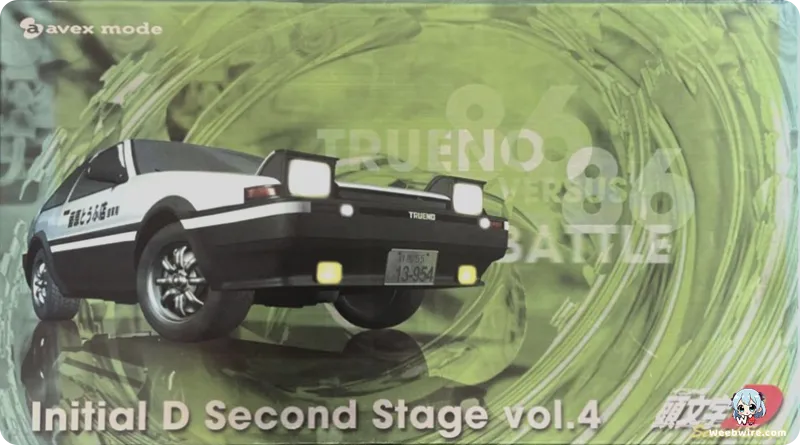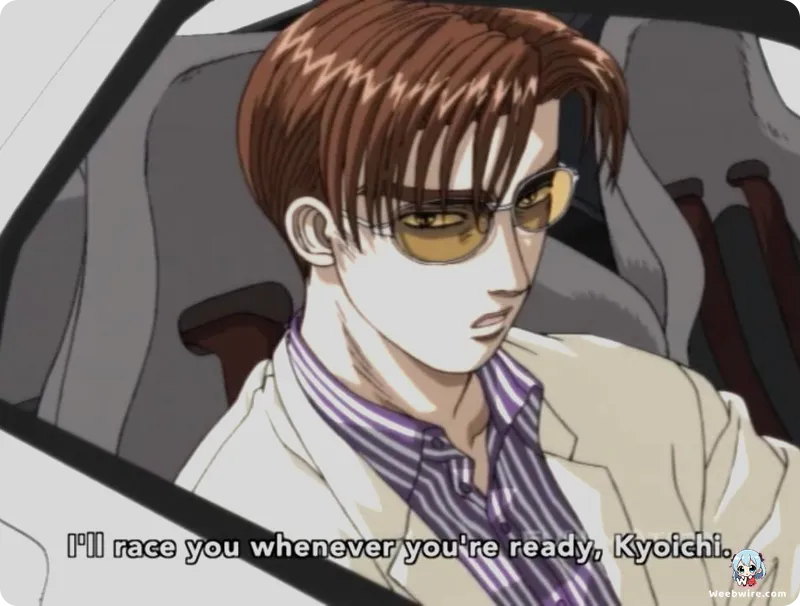Initial D 2nd Stage: Unveiling the Critical Evolution of Street Racing's Iconic Legend

For legions of anime enthusiasts, "Initial D" evokes the visceral thrill of high-octane street races, the allure of legendary Japanese sports cars, and the electrifying pulse of Eurobeat. While the entire franchise is revered for its pioneering portrayal of touge racing, "Initial D 2nd Stage," which first captivated audiences in late 1999, stands as a truly pivotal installment. Far from being a mere continuation, this second chapter profoundly deepened the narrative, intensified the technical challenges, and significantly refined the animation, solidifying its status as a fan favorite and an indispensable phase in Takumi Fujiwara's burgeoning racing journey.
A New Competitive Landscape
A dramatic shift in Takumi’s competitive landscape defines a key aspect of "Initial D 2nd Stage." The first stage saw him predominantly battling fellow drivers of rear-wheel-drive (FR) vehicles, but the second introduced the formidable Emperor team, notorious for their use of all-wheel-drive (AWD) Mitsubishi Lancer Evolutions. This wasn't merely a change in vehicle models; it presented a fundamental philosophical challenge to Takumi’s driving style and the very essence of his AE86 Sprinter Trueno. The Lancer Evolutions, with their superior grip and raw power, compelled Takumi to confront his car's inherent limitations and elevate his skills to an unprecedented echelon. The intense confrontations against Kyoichi Sudo and Seiji Iwaki transcended simple races, evolving into intricate tactical chess matches that meticulously explored the strengths and weaknesses of diverse drivetrain philosophies, enriching viewers' automotive knowledge.
The AE86's Engine Transformation
A particularly memorable and impactful event in "2nd Stage" is the catastrophic engine blowout of Takumi's cherished AE86. This pivotal moment serves as more than just a plot device; it brutally underscores the harsh realities of amateur racing and the absolute limits of even the most diligently maintained machines. The subsequent replacement with a high-revving TRD (Toyota Racing Development) Group A race engine, originally designed for a touring car, provides a fascinating piece of automotive lore. This new powerplant, capable of screaming up to 11,000 RPM, drastically altered the AE86's performance characteristics. It endowed Takumi with a significant power boost but simultaneously demanded a completely new driving approach, forcing him to adapt and master the delicate art of sustaining the engine within its narrow, high-RPM power band. This meticulous technical detail exemplifies the profound research invested in the series, resonating deeply with both casual viewers and dedicated car enthusiasts.

Takumi's Evolving Passion
Beyond the mechanical intricacies, "Initial D 2nd Stage" also charted significant character development for Takumi. Initially driven by the mundane obligation of tofu deliveries for his father, the formidable challenges presented in "2nd Stage" began to ignite within him a genuine, burning passion for racing. His encounters with more experienced and technically proficient drivers, particularly the intellectual Kyoichi Sudo and the versatile Wataru Akiyama, compelled him to meticulously analyze his own driving, grasp car dynamics with greater depth, and cultivate a more strategic approach to racing. This stage definitively marks Takumi's subtle yet profound transition from a naturally gifted but somewhat indifferent driver to a more serious, dedicated, and analytically minded racer, laying the essential groundwork for his future endeavors with Project D.
Refined Animation and Visuals
From an animation perspective, "Initial D 2nd Stage" showcased noticeable and crucial improvements in its CGI car models. While the first stage was groundbreaking in its pioneering fusion of traditional 2D animation for characters and 3D CGI for race sequences, "2nd Stage" meticulously refined this technique. The car models appeared demonstrably smoother, more intricately detailed, and integrated far more seamlessly into the 2D backgrounds, resulting in remarkably fluid and dynamic race scenes. This continuous evolution in animation technology was indispensable for maintaining the series' visual appeal and effectively conveying the blistering speed and raw intensity of the touge battles. The production studio, OB Planning, alongside its collaborative partners, demonstrated an unwavering commitment to pushing the boundaries of anime production at the time.
The Unforgettable Eurobeat Soundtrack
Furthermore, the iconic Eurobeat soundtrack remained an undisputed cornerstone of "2nd Stage," arguably becoming even more intrinsically ingrained in the series' identity. Tracks such as 'Beat of the Rising Sun,' 'Heartbeat,' and 'Gamble Rumble' (though the latter is more commonly associated with the movie, its spirit permeates the era) became irrevocably synonymous with the high-speed chases. The strategic and masterful placement of these energetic tunes during critical race moments dramatically amplified the tension and excitement, rendering the viewing experience truly immersive. The symbiotic relationship between the breathtaking visual spectacle of the races and the exhilarating auditory assault of Eurobeat is a singular hallmark of the "Initial D" franchise, and "2nd Stage" perfected this unforgettable formula.
Authenticity Through Expert Consultation
Finally, a lesser-known yet crucial fact about the production process of "Initial D" (and by extension, "2nd Stage") is the significant, hands-on involvement of actual professional drift racers and engineers who advised the creative team. This unwavering dedication to authenticity is precisely what allowed the series to depict realistic driving techniques, nuanced car modifications, and intricate race strategies with such astonishing accuracy. The invaluable insights gleaned from these experts profoundly assisted Shuichi Shigeno, the original manga artist, in crafting a narrative that resonated deeply with car enthusiasts, making the series not just wildly entertaining but also surprisingly educational regarding the subtle nuances of automotive sports. "Initial D 2nd Stage" transcends its identity as merely an anime; it is a cultural phenomenon that continues to captivate global audiences with its exhilarating blend of thrilling action, relatable character arcs, and an almost obsessive attention to automotive detail, unequivocally solidifying its enduring legacy in the annals of anime history.
Credits
Initial D 2nd Stage
Author
Shuichi Shigeno
Cover Art
Shuichi Shigeno
Studio
OB Planning
Publisher
Kodansha
Producers





